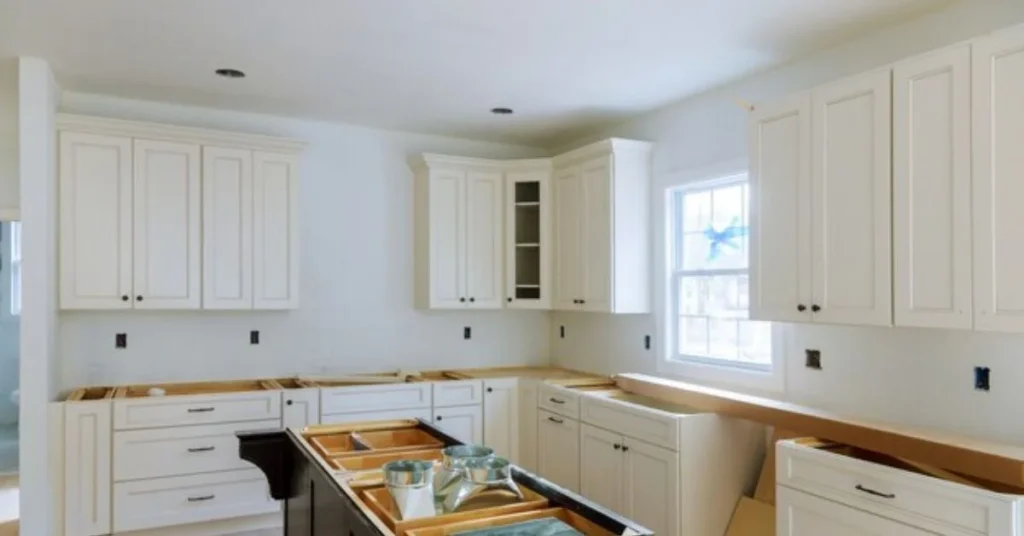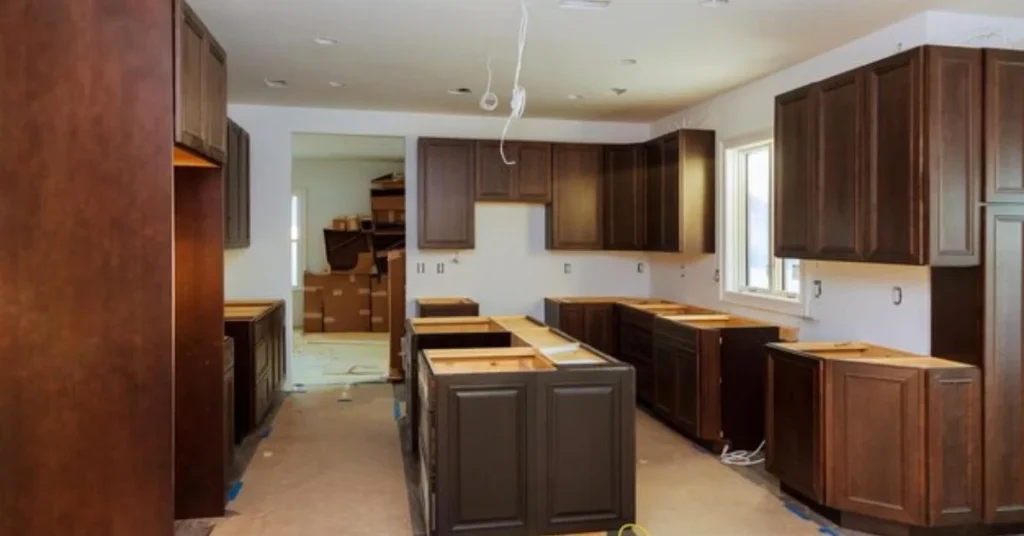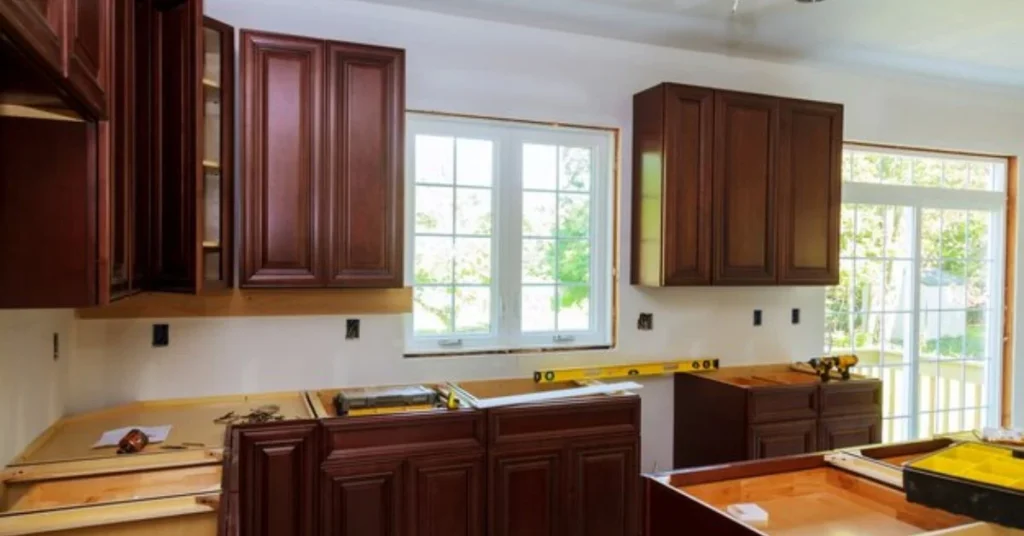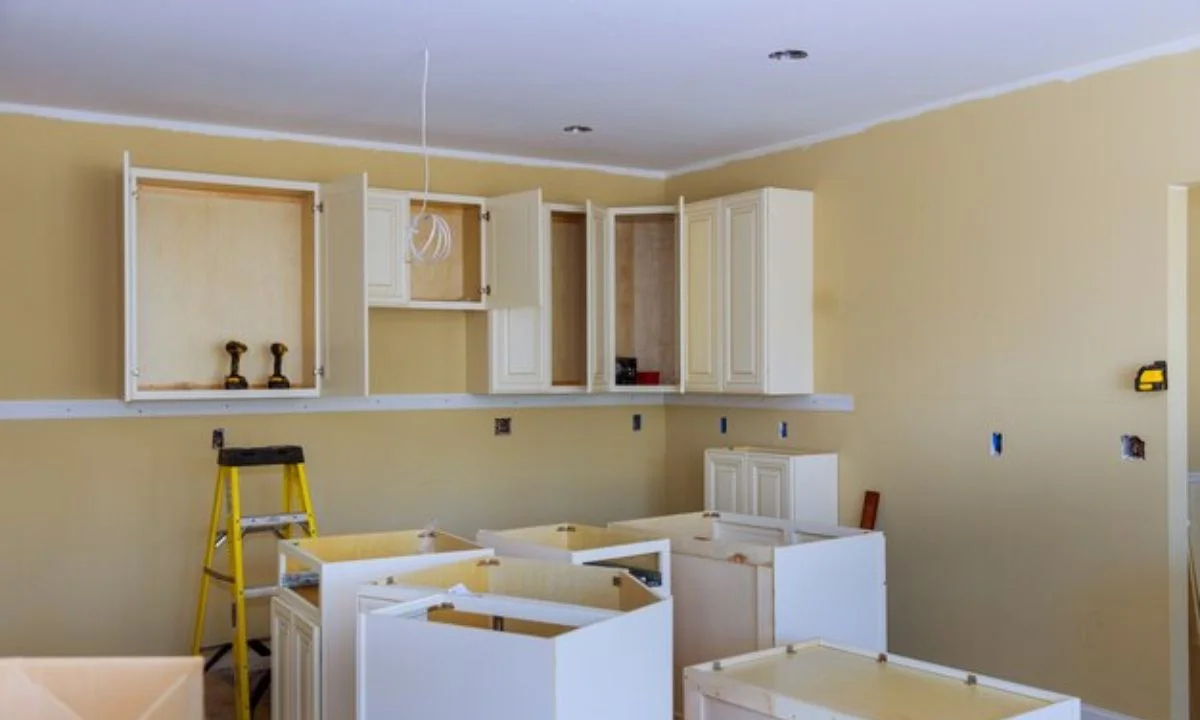When it comes to giving your kitchen a fresh new look, painting kitchen cabinets before and after the transformation is one of the most dramatic changes you can make. Not only does it breathe new life into your space, but it’s also a cost-effective way to update your kitchen without replacing the cabinets. If you’ve been considering this project, you’re in the right place! This complete guide will walk you through the process, ensuring you achieve a professional-looking finish with a stunning “before and after” transformation.
Why Should You Consider Painting Your Kitchen Cabinets?
Your kitchen is one of the most used areas in your home, and naturally, it can start to show signs of wear and tear. Replacing kitchen cabinets can be expensive, and not everyone has the budget for a full renovation. That’s where painting comes in. By painting your kitchen cabinets, you can:
- Save money compared to replacing cabinets.
- Completely change the style and color of your kitchen.
- Increase the value of your home with an updated look.
- Customize the finish to match the latest trends in kitchen design.
With the right preparation and technique, your “before and after” results will rival a professional kitchen remodel.
Must read How Much Should a 10×10 Kitchen Remodel Cost?
How to Prepare for Painting Kitchen Cabinets Before and After
Before jumping into painting, preparation is key to ensuring your project goes smoothly and results in a beautiful finish. Here’s a step-by-step guide to preparing your Painting Kitchen Cabinets Before and After.
- Clear the Kitchen Area:
Begin by removing everything from your kitchen cabinets and clearing the countertops. You’ll need plenty of space to work, and having a clutter-free zone makes the process easier. - Label and Remove Cabinet Doors:
It’s important to label each cabinet door and its corresponding hardware so you can easily put them back in place later. Use a screwdriver or drill to remove the doors and drawer fronts. Place the screws and hinges in labeled bags to keep them organized. - Clean the Cabinets Thoroughly:
Over time, grease, dirt, and food splatters can accumulate on cabinet surfaces. Cleaning them with a degreaser will ensure that the paint adheres properly. Skipping this step can cause the paint to peel or not stick at all. - Sanding is Essential:
Sanding helps create a smooth surface for the paint to adhere to. Use fine-grit sandpaper (around 120-150 grit) and lightly sand all the surfaces. After sanding, wipe down the cabinets with a damp cloth to remove dust. - Fill Holes and Gaps:
If your cabinets have any dings or scratches, fill them with wood filler. Once dry, sand the filled areas smooth to ensure an even finish when painting. - Tape Off Surrounding Areas:
Using painter’s tape, carefully tape around the cabinets to protect the walls and countertops from paint splatters.

What Type of Paint Should You Use for Cabinets?
Not all paints are created equal, especially when it comes to Painting Kitchen Cabinets Before and After. You’ll want to choose a durable, high-quality paint that can withstand the daily use and moisture of a kitchen environment.
- Latex Paint: This water-based paint is popular for its low odor, fast drying time, and easy cleanup. High-quality latex paint is durable and will resist fading and chipping.
- Oil-Based Paint: Though it takes longer to dry and has a stronger odor, oil-based paint offers a smooth, hard finish that is highly durable.
- Chalk Paint: For a rustic or vintage look, chalk paint is a great option. It has a matte finish and doesn’t require a primer, making it easy to use.
Choosing a paint with a satin, semi-gloss, or gloss finish will make your cabinets easier to clean and more resistant to wear and tear.
Step-by-Step Guide to Painting Kitchen Cabinets Before and After
Now that you’ve prepped your cabinets and chosen the right paint, it’s time to dive into the actual painting process. Here’s how you can achieve stunning “before and after” results.
- Prime the Cabinets:
Priming is crucial to ensuring that the paint adheres to the surface and lasts longer. Use a stain-blocking primer that’s specifically designed for kitchen cabinets. Apply one or two coats, allowing each to dry fully before proceeding. - Apply the First Coat of Paint:
Using a high-quality brush or roller, start painting the cabinet doors, frames, and drawers. Always paint in the direction of the wood grain for a smoother finish. Apply a thin, even coat and let it dry completely. - Sand Between Coats:
To achieve a professional finish, lightly sand the surfaces between coats of paint using fine-grit sandpaper. Wipe away any dust with a tack cloth before applying the next coat. - Apply the Second Coat of Paint:
Once the first coat has dried and been sanded, apply a second coat of paint. Depending on the color and finish you’re aiming for, you may need to apply a third coat. - Let the Cabinets Dry:
After applying the final coat, let the cabinets dry for at least 24 hours. If possible, give them a full 48 hours to cure before reattaching the doors and drawer fronts. - Reattach Doors and Hardware:
Once the paint has fully dried, reattach the cabinet doors, drawer fronts, and hardware. If you want to give your kitchen a more modern look, consider updating the hardware to match your new color scheme.

Painting Kitchen Cabinets Before and After: What to Expect
The transformation that comes from painting your kitchen cabinets can be dramatic. Whether you’re going from dark wood cabinets to a bright white or changing from a dated oak finish to a trendy navy blue, the “before and after” pictures will speak for themselves. A fresh coat of paint can make a small kitchen feel more spacious or bring a modern touch to a traditional kitchen.
By taking the time to properly prepare and execute the project Painting Kitchen Cabinets Before and After, you can expect professional-looking results that will last for years to come.
Conclusion
Painting kitchen cabinets before and after your project will give you the stunning kitchen transformation you’ve always wanted. While it does take time and effort, the results are well worth it. By following the right steps, preparing thoroughly, and using the best materials, you’ll achieve a finish that looks professional and lasts for years. So, why wait? Start your kitchen cabinet painting journey today!
For more inspiration and detailed tutorials on kitchen makeovers, check out these external resources on painting kitchen cabinets and choosing the right paint.

How long does it take to paint kitchen cabinets?
It usually takes about 3 to 5 days to paint kitchen cabinets, including preparation and drying time. For a more detailed finish, you might need additional time for sanding between coats.
Do I need to sand my cabinets before painting?
Yes, sanding is essential to ensure that the paint adheres to the surface properly. It also helps smooth out any imperfections in the wood.
What is the best type of paint for kitchen cabinets?
The best paint depends on your preference, but high-quality latex or oil-based paints with a satin or semi-gloss finish are most recommended for durability.
Can I paint cabinets without removing the doors?
While it’s possible, removing the doors will result in a cleaner, more professional finish and make the painting process easier.
How long will painted kitchen cabinets last?
With proper preparation and high-quality paint, your painted cabinets can last 5 to 10 years before needing touch-ups or a new coat.
